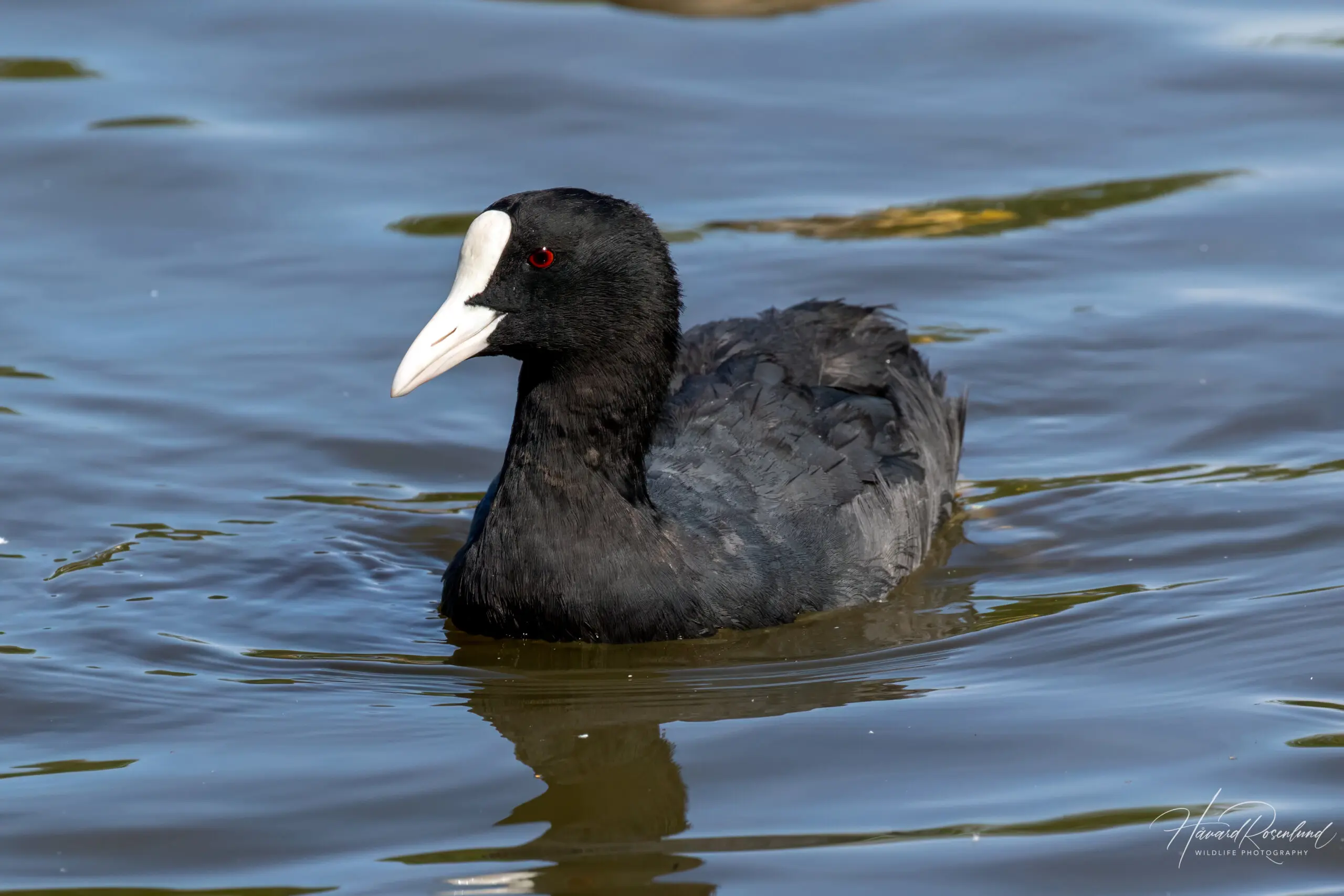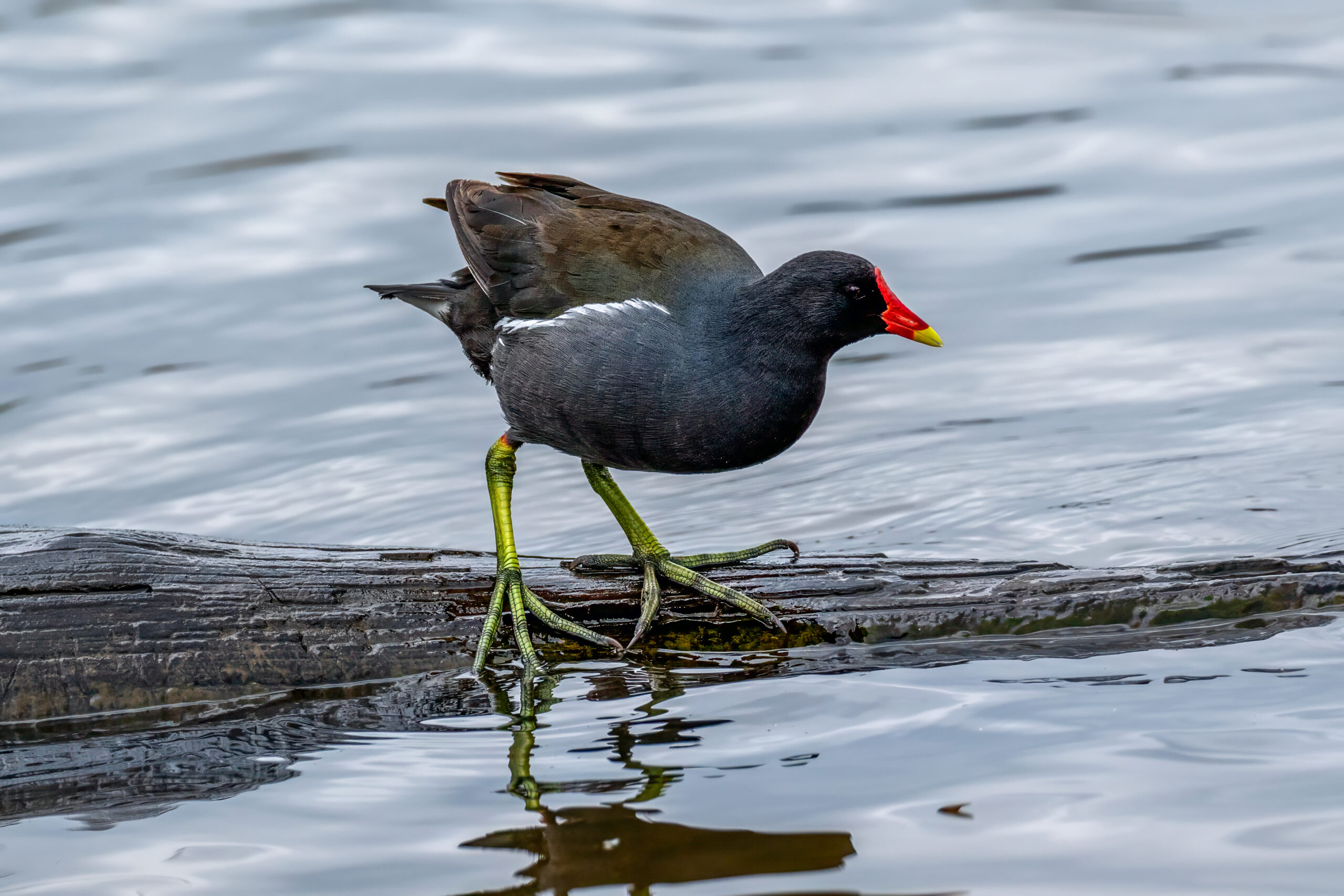Description
The Eurasian coot (Fulica atra), also known as common coot, is a rail-like waterbird with an extensive Old World distribution. It is found from Europe, across Asia and parts of Africa, all the way to Australia and New Zealand. It is an easily distinguishable bird, with a sooty black plumage, large yellowish-green legs, red eyes and a conspicuous white beak and frontal shield. It grows to lengths of 32-42 cm (13-17 in). Juveniles are paler, have a white breast and throat, and no frontal shield.
Diet & habitat
The Eurasian coot is always found close to freshwater, and prefers habitats such as wetlands, lakes and ponds. It is not a shy bird, and is often seen near or in ponds within parks and urban areas. In areas where freshwater freezes, it migrates to warmer climates during winter. It is an omnivorous bird and feeds both on vegetation and small animal prey. It might also eat eggs of other birds. It can dive and find food underwater, where it can dive to depths of 7 meters and stay underwater for 15 seconds. It can also eat vegetation by grazing on land.
Nesting
Breeding season for Eurasian coot varies with location and can span from February to September. In areas with longer winters, a breeding season of April to July is common. Nests are built of dead grass and reeds, sometimes with pieces of garbage, such as paper and plastic. They are often placed near the water’s edge. Up to 10 eggs are laid, but only a few normally survive. Eggs often get preyed on by other species, such as gulls and herons, but most chicks die because of starvation. Parents may selectively starve some of their young, and sometimes even kill them outright, when there is a lack of food. Both parents take part in incubation and the raising of young.
Some coots may even lay their eggs in the nests of other coots, a behaviour called brood-parasitism. This can happen when conditions to raise their own young are unfavourable, if their own nest gets destroyed, or if they want to extend their reproduction life by not having the strains of parenthood shortening it. Some coots also put just some of their eggs in another nest, while keeping the rest for themselves.
Status
The Eurasian coot is very widespread with an extensive distribution. It is not globally threatened and is listed as least concern on the IUCN Red List. It is more threatened in Europe, where suitable habitats have been disappearing. The European population is therefore listed as near threatened.








